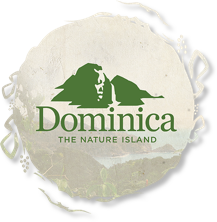Imagine discovering a hidden swath of old-growth forest, a thriving, uncharted coral reef in the middle of the ocean, or — in this case — a lush, volcanic island rising jagged into the sky, warmed by the waters of the Caribbean. Would you tell those back home about your find? Or would you keep it to yourself?
This is the inner debate you’ll wage when you visit Dominica. It feels like Earth has divulged to you a secret, and it’s your responsibility to hold that secret near and dear, to preserve the experience as you had it: wild and unmarred.
If you find yourself lucky enough to be on the Nature Island, hop in the car and start down your path to discovery, to secret-keeping, to the ultimate Caribbean road trip. At just under 300 square miles of volcanic cliffs, beaches, wild rivers, and endless jungle, here’s what Dominica could have in store for you on a week-long itinerary.
NAVIGATING THE NORTH
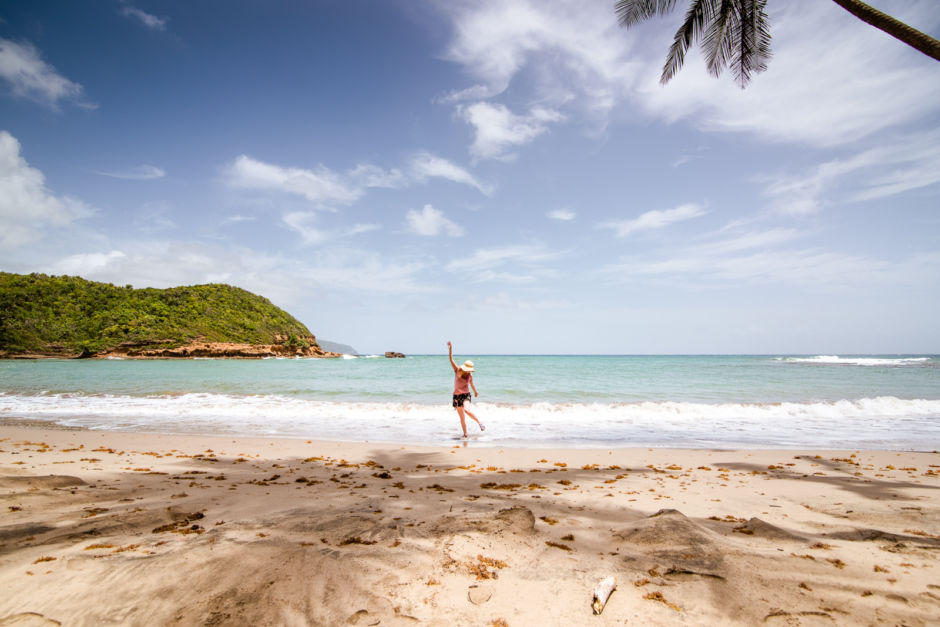
Photo: Jacqueline Kehoe
Get yourself to the northwestern side of the island, near the old capital city of Portsmouth, the country’s second-largest — with a few thousand inhabitants. The island is wilder up here, roads hug the cliffs and seem to disappear, and nature reigns even more supreme.
If you can swing the price tag, this is where you’ll find Secret Bay, a resort luxe enough to make the cover of Travel + Leisure. Hotel the Champs is another sturdy option, and there are plenty of accomodations in the city proper. Once you’re settled in, there are two main day trips you should take from your home base:
Cabrits National Park
This was Dominica’s first national park, largely a result of a movement led by politician/historian/author/anthropologist Dr. Lennox Honychurch — if he’s giving talks at the park while you’re there, attend. His Indiana Jones demeanor and love for the community has made him an island icon.
With or without Honychurch’s knowledge under your belt, wander the park. Fort Shirley, an 18th-century British garrison, is the main draw of Cabrits. It was abandoned by the 1850s, and you’ll still find rooms full of artillery left to acquire dust. “Adaptive restoration” began in the 1980s and continues; nowadays, you’ll wander both immaculate meeting rooms and stone ruins being swallowed by the Dominican jungle.
Batibou Beach
This is one of the prettiest beaches on the planet, much less on the Nature Island. It’s privately owned by a prominent Dominican family, and you’ll run into them on your beach visit. Irma is the NYC-trained chef slinging five-star meals at you from behind the wooden bar; Jacqueline will hook you up with a hike or tube safari down the Hampstead River — you can float it all the way into the Atlantic.
The beach is unspoiled, empty, serene. Palm trees bend down to the earth and drop their coconuts, the water stirs blue against the greens rising out of the nearby cliffs. And if the landscape doesn’t do it for you, Irma’s coconut cream punch probably will.
If you have time to scoot further inland, know that the Hampstead River — in the opposite direction of the Atlantic — leads you to Chaudiere Pool, a romantic swimming hole hiding in the middle of the jungle (bring good hiking shoes and follow the signs).
HEADING SOUTH
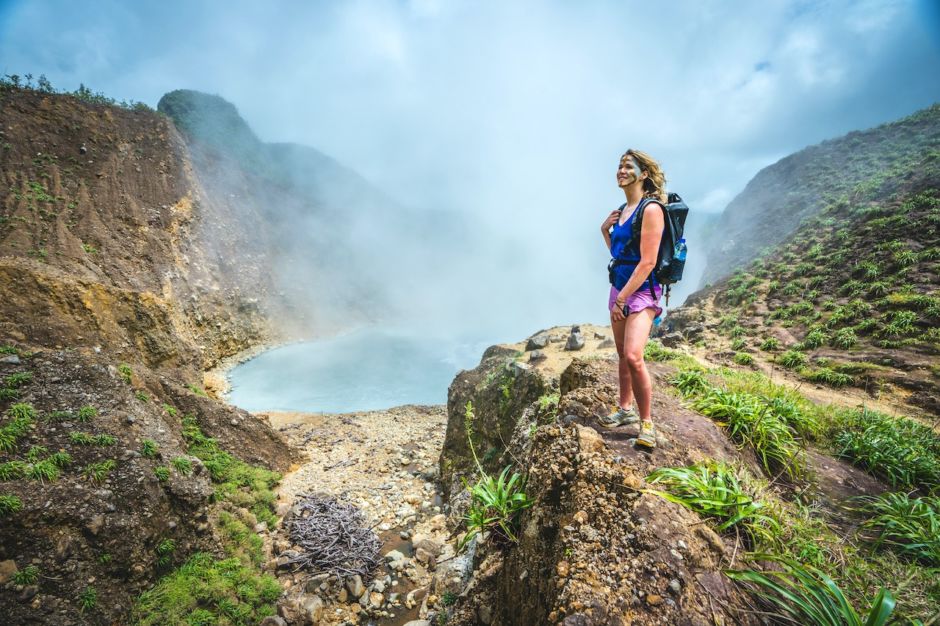
Photo: Scott Sporleder
Drive south to Roseau, the nation’s capital. The town is livelier, bigger, and more modern than Portsmouth; the roads are flatter and fresher, welcoming diplomats and travelers like us. The place to stay here is Fort Young Hotel, a converted military fort sitting on the edge of the water.
The city is a great hub for adventures both off the coast and further inland. The trailhead for Boiling Lake, found in Morne Trois Piton National Park, is a quick drive up the hills toward Wotten Waven. You’ll park at Titou Gorge — come back here later for a memorable swim — and there’s good signage along the road to let you know you’re going in the right direction. The hike is six miles round-trip, a series of slow, upward slogs through the jungle and into visibly volcanic, often unmarked terrain. Definitely go with a guide — to find one, ask around the nearby village of Laudat, arrange one through your hotel, or contact one from this list. English speakers should definitely seek out Marvin, or “Egg Man,” one of the best guides on the island.
In the Titou Gorge area, you’ll also find Trafalgar Falls, Middleham Falls, and the headquarters of Extreme Dominica, the guys who’ll convince you to jump off cliffs, touch crayfish, and swim through narrow rock passages — aka canyoning. If any of this wears you out, the village of Wotten Waven, known for its natural hot springs, is a few roads over.
Back on the coast, talk to the folks at Dive Dominica. They’ll take you snorkeling or scuba diving to Champagne Reef, where you can watch the Earth blow bubbles to the surface. They also run whale-watching tours — a must-do, considering Dominica is the only place on the planet where whales hang out all year long.
For a sunset shot, stop and walk around Scott’s Head. You could technically swim around it, too — from the Atlantic all the way to the Caribbean — but the shots are just as good on foot.
ENDING EAST
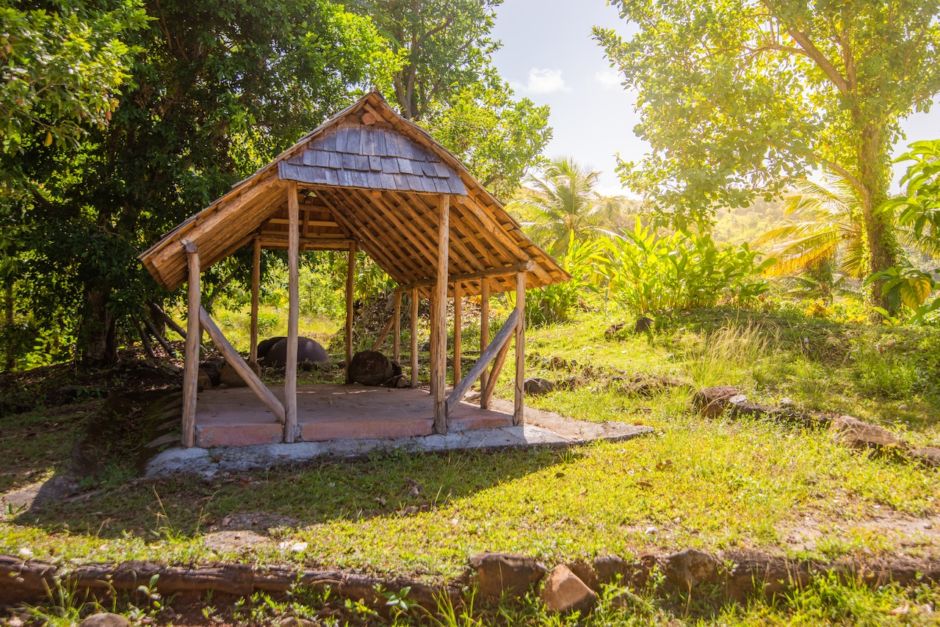
Photo: Jacqueline Kehoe
Head up the main road splitting the island, towards Marigot, and it’ll take you pretty close to Pagua Bay House. But well before you’re at your lodging, make a side trip to the Emerald Pool. There’s a short trail, and it’ll lead you to a small waterfall worthy of David Attenborough’s narration. The water at its base swirls in shades of green and blue, a serene moment on an otherwise wild island.
Once you’ve set up shop at your hotel, head straight for the Kalinago Territory. This is the last Indigenous outpost held in the Caribbean — if anyone ever tells you all the original tribes are gone, it’s simply untrue. They govern 3,000+ acres along the eastern edge of Dominica, and visitors are welcome to tour the Barana Aute, or recreated village. A member of the Kalinago will take you around the grounds, showing you their way of life, both past and present.
If you buy only one souvenir from your trip, make it from right here. Everything is handmade, and the profits stay in the community.
HELPFUL TIPS
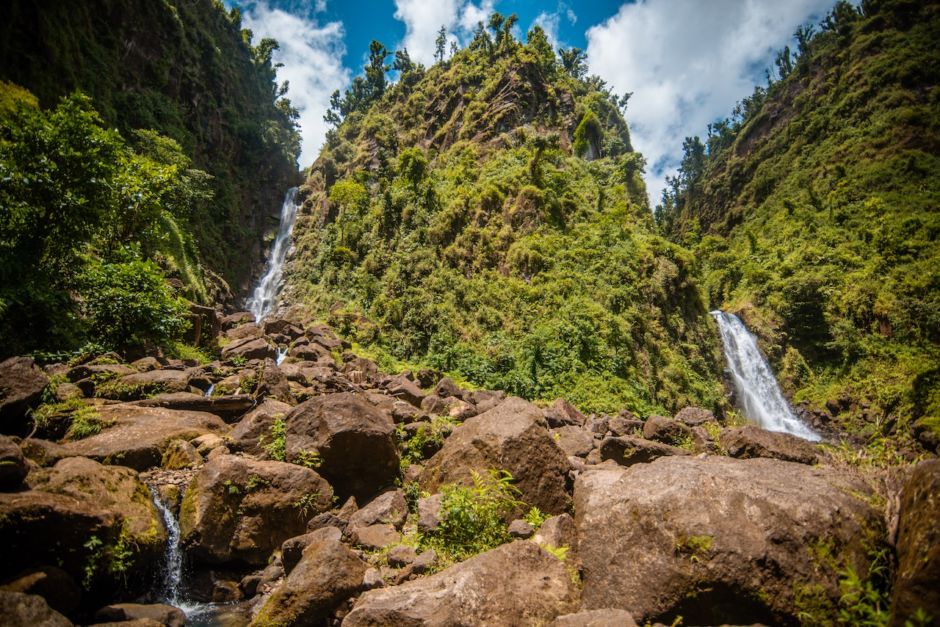
Photo: Jacqueline Kehoe
The language of driving
Americans should note that Dominicans drive on the left, with the driver’s seat on the opposite side of the car. The narrow roads are often unmarked — “Everyone knows where to go; why do we need signs?” — and on hills, one side will drop off in steep decline into the jungle or water, the other into a squared-off cement drainage ditch.
“Lanes” are often a suggestion, and you may see impatient drivers getting creative on the wrong side of the road. That is to say, safety is a community effort here. People honk to say hello, to thank you for letting them pass, to alert oncoming drivers along a blind curve. You should do the same.
If this sounds like freedom to you, rent a car. If not, you may want to hire a driver.
Meals, tipping, fuel, and cash
Lunch is, usually, the biggest meal of the day and is had around 1pm. Some restaurants will automatically include a 10% gratuity; for stellar service at a restaurant that does not, feel free to round up. For stellar guides, a small tip is customary.
Gas stations are easy to find in and near cities — an attendant will pump the gas for you. It’s easiest to use cash, and USD is widely (though not always) accepted. It’s best to familiarize yourself with the day’s exchange rate, though the attendant will likely give you a fair rate.
Most establishments — minus some of your mom-and-pop stands — accept Mastercard or Visa. Many places will offer you a choice between ECD and USD; that’s up to you.
Site passes
Many of Dominica’s best sites — from Boiling Lake to Cabrits National Park to Indian River — require a site pass, a small slip of paper that allows you access to all the island’s best attractions. You can obtain a seven-day version at various visitor centers for $12USD; otherwise, grab an individual pass onsite for $5.
Really, this is only a best-of itinerary, and a deeper dive into the island may be more your speed. Check out Matador’s Dominica destination page for more trip-planning ideas. And when someone says to you, “Dom-IN-ica?” You can say, “No, Domin-EEK-uh. The Nature Island.”
